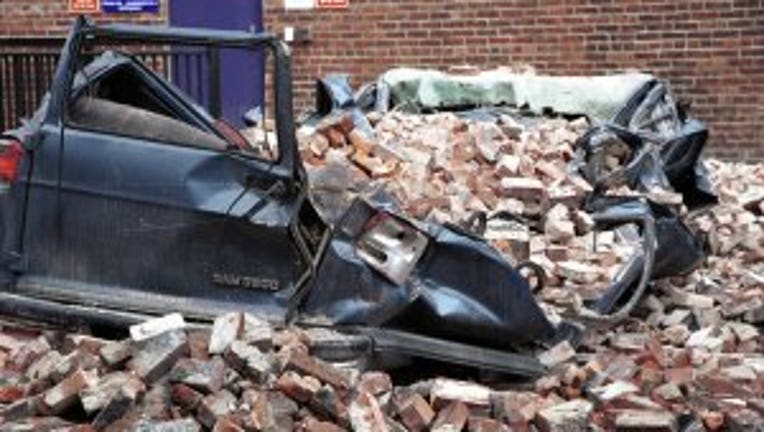22 years ago on this day: 6.8M Nisqually earthquake shakes Western Washington

Van crushed by falling bricks in Seattle, 2001. Courtesy: FEMA News Photo
On Feb. 28, 2001 before 11 a.m., the 6.8 magnitude Nisqually earthquake shook the Puget Sound area without warning.
Tuesday marks 22 years since the quake struck 30 miles below Olympia in the subducting Juan de Fuca plate and lasted less than a minute.
It caused upwards of $4 billion dollars in damages, and resulted in hundreds of injuries. One person died of a heart attack.
>>RELATED: Nisqually Quake was 'wake-up call' but region still not ready for 'the big one'
The 2001 Nisqually earthquake was the most recent quakes most Washingtonians remember, and since then the state has changed its response. Similar deep quakes like Nisqually happened in 1949 and 1965.
"Understanding that the earth is actually in motion and that there is plate tectonics going on is what first hooked me in," University of Washington professor Harold Tobin said in 2019. "We can help society if we understand faults better."
>> RELATED: Is the Pacific Northwest prepared for the Big One?
To prepare the public by tracking earthquakes, his office is located in the basement area of UW’s atmospheric science building, called the Pacific Northwest Seismic Network.
>> RELATED: Does your home need an earthquake retrofit? Here's how to check
Seattle's Alaskan Way Viaduct was also torn down as a direct result of the Nisqually quake.
As of 2021, Washingtonians have access to ShakeAlert, which is an earthquake early warning system that detectives significant quakes so quickly that alerts can reach many people before the shaking hits. You can get information here.
The Washington Emergency Management Division is reminding people the steps they can take to keep you and your family safe for the next earthquake.
- Learn how to Drop, Cover and Hold On, and practice how to do it in a variety of situations so you can act quickly.
- Ensure that you have ShakeAlert earthquake early warning enabled on your phone and learn what the alerts will look and sound like so you can use them to act quickly.
- Look around your home, school, office, or other areas where you spend time, and take steps to secure your space.
- Work with your local community to promote retrofitting unreinforced masonry buildings in your community so they’ll be safer when the ground shakes, saving lives and property, and reducing the amount of time it takes to recover after a quake.

